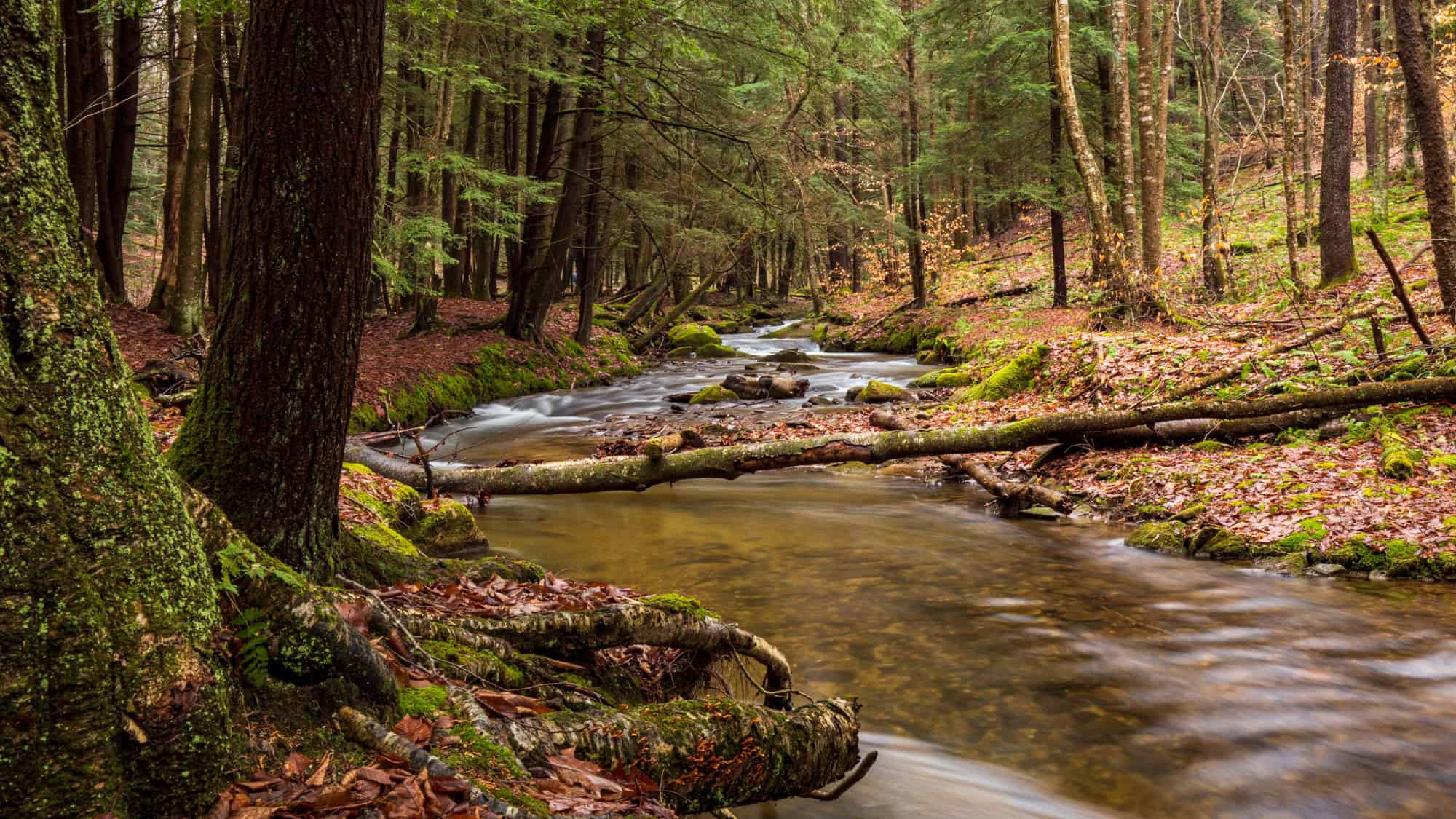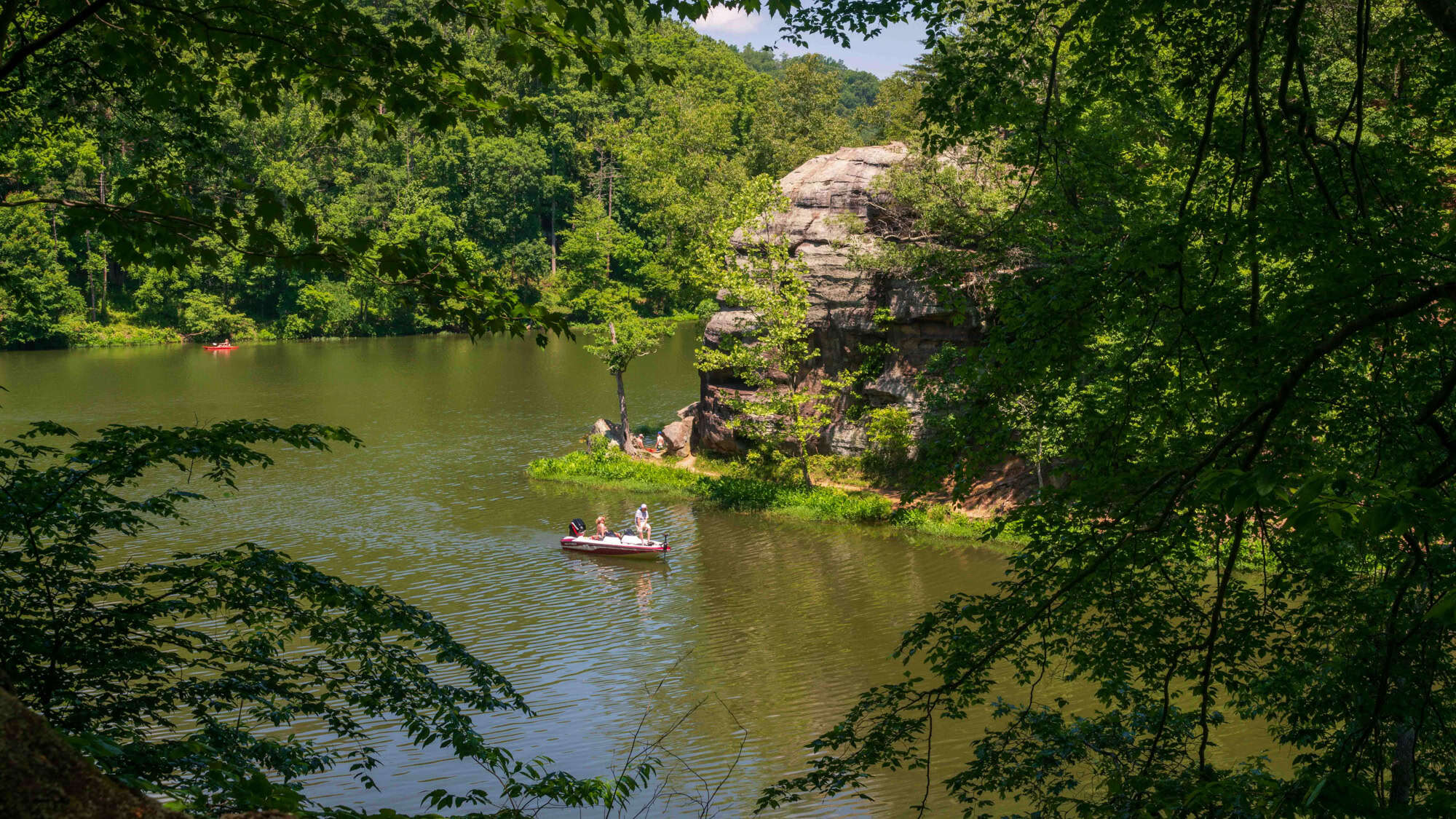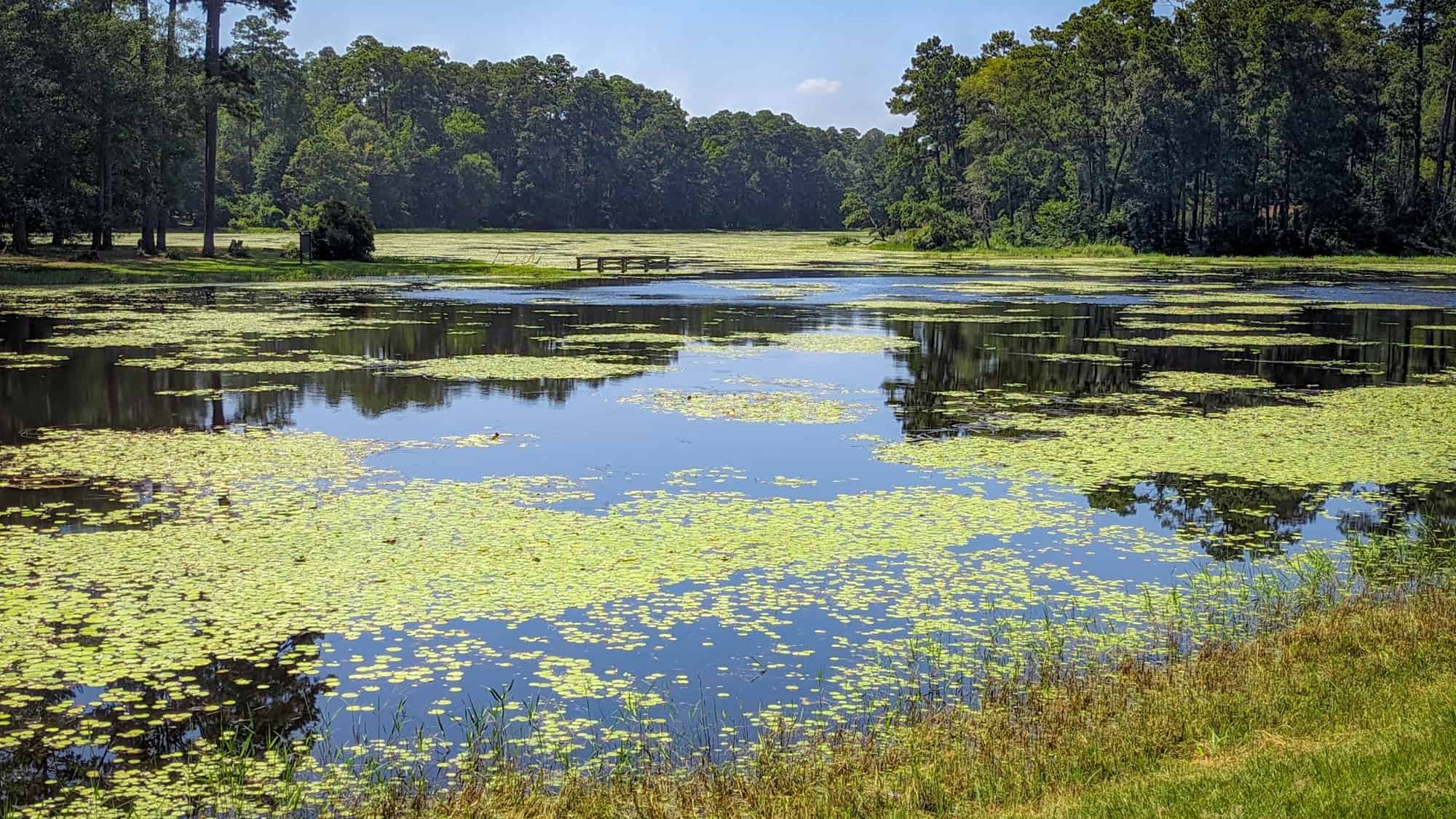Found By Accident contains affiliate links and is a member of the Amazon Services LLC Associates Program. If you make a purchase using one of the Amazon links (or other affiliate links), we may receive compensation at no extra cost to you. See our disclosure policy for more information.
12 National Forests You’ll Regret Visiting Without Tick Protection
Tick season is here, just in time to make your warm-weather adventures a little more…interactive. Because these tiny, uninvited guests love nothing more than latching onto unsuspecting hikers, campers, and pretty much anyone who dares to enjoy the great outdoors.
And trust me, they don’t discriminate. Love ‘em or hate ‘em (okay, we all hate ‘em), ticks thrive in certain areas where your stroll through the woods might turn into Ground Zero for itching and paranoia. But hey, don’t panic just yet! We’re about to break down some places that come with an extra “bite” risk.
And why this topic, you ask? Well, funny story – just over a week ago, we decided to go on what we thought was an innocent little stroll here in Kansas near our home. After just about an hour of wandering along a path through the so-called “woods,” I had not one, but TWO ticks hitchhike their way onto me. TWO. Talk about an unwelcome surprise.
Allegheny National Forest, Pennsylvania

Pennsylvania – home of cheesesteaks, Liberty Bell history, and apparently, an all-inclusive resort for ticks. If you’re planning on exploring the gorgeous Allegheny National Forest, first of all, good choice; the trails and scenery are stunning.
But don’t get lulled into thinking your hiking boots make you invincible. This state consistently tops the charts for Lyme disease cases, so those woods are practically the ticks’ red-carpet event. They love tall grasses, damp understory areas, and, well, you.
Spraying yourself down with repellent may not earn you points for smelling great, but trust me when I say it’s better than becoming an all-you-can-eat buffet. And double-check every crevice when you’re done (ticks love privacy, but you don’t want to be playing host, even accidentally).
White Mountain National Forest, New Hampshire

If there’s one thing New Hampshire does well, it’s scenery so good it could make a screensaver jealous. But while you’re soaking in the peaks, trails, and forests of White Mountain National Forest, a little blacklegged hitchhiker might already be plotting its moves.
That’s right… blacklegged ticks are more plentiful here than seating at a holiday family dinner. And they adore hanging out near trails frequented by deer and rodents, their preferred living Uber drivers. Oh, and surprise, those pesky little creatures could pass on Lyme disease, too.
Your best option? Stick to the center of trails, avoid brushing up against plants, and maybe skip rolling around in leaf piles (tempting as it is, I get it). Just think of ticks as nature’s way of reminding you to stay alert.
George Washington National Forest, Virginia

Virginia might be for lovers, but George Washington National Forest is for ticks with boundary issues. Located in a state seeing a steady rise in tick-borne illnesses, this forest’s Appalachian trails are like a superhighway for tiny bloodsuckers.
And they’re not picky eaters, either; wildlife and human ankles alike are on the menu. The mix of thick vegetation and warm weather makes this place paradise (for ticks, anyway). For you? Not so much, unless you armor up with long pants, repellents, and thorough tick checks after hikes. It’s sort of a game of “find the enemy,” except the prize is not getting an unsolicited souvenir from your outdoor adventure.
Still, those mountain views? Worth it. Just maybe at a cautious, tick-free distance this time of year.
Chattahoochee-Oconee National Forest, Georgia

Georgia… home of peaches, sweet tea, and ticks that refuse to take a vacation. The warm, humid climate down here means tick season feels more like a tick eternity.
And these forests, like Chattahoochee-Oconee, may offer jaw-dropping views and rippling streams straight out of a nature lover’s dream, but the ticks? They’re more excited about your ankles than any picturesque waterfall.
Protecting yourself requires a little strategy – think a bug spray bath, tucking your pants into your socks (fashion icon moment, right?), and giving yourself a full body pat-down after your adventure. Enjoy the trails; just… remember you’re not the only one who loves the outdoors.
Hoosier National Forest, Indiana

Indiana doesn’t mess around with a “tick season” it seems. Over in Hoosier National Forest, they’re active much of the year. Ticks here are overachievers, and the state sees a notably high number of tick-related ER visits.
Basically, these blood-sucking pests have put Indiana on the map, but not in a way anyone’s proud of. Hoosier is full of stunning trails and recreational spots, though, so it’s worth fending off the army of tiny vampires.
The trick? Prep for battle. Light-colored clothing makes spotting stray ticks easier (and maybe gives them a subtle hint you’re not interested). Combine that with liberal bug spray use and mad inspection skills post-hike, and you might just outsmart these relentless critters. Might. No promises, though.
Monongahela National Forest, West Virginia

Monongahela National Forest could’ve been tailor-made for a postcard – lush woods, serene streams, and trails that make you feel like you’ve wandered into a fairytale. But don’t be fooled by the charm.
The combination of shade, leaf litter, and just the right touch of humidity creates a perfect love nest for ticks. These little freeloaders thrive here, and they’re not shy about hitching a ride if you give them the chance.
The forest offers fantastic adventures, but don’t forget your visual inspection ritual afterward. People tend to overlook ankles and behind-the-knee spots, aka tick penthouses. And try not to dwell too much on the fact that ticks have existed for around 100 million years… they’ve had plenty of time to become pros at their tiny ambush lifestyle.
Wayne National Forest, Ohio

Ohio may be more known for football rivalries and rock ‘n’ roll roots, but Wayne National Forest is on the map for a different reason – ticks, and plenty of them. And the state has seen a recent spike in tick-borne illnesses, so these critters have clearly been networking in the heavily wooded areas here.
Wayne’s beautiful trails? Ideal for a long walk. Tick hotspots? Also, ideal, unfortunately. They are just lurking in the grass, waiting for you to wander by.
Keep everything covered (that’s a tip that applies to both surviving ticks and avoiding poison ivy). And remember, the forest might be peaceful, but the ticks sure aren’t.
Ozark-St. Francis National Forest, Arkansas

Mild winters, lush forests, and near year-round tick activity? Just another day in the Ozark-St. Francis National Forest. Arkansas hosts ticks that are active so often, it’s like they skipped hibernation class.
And these little hitchhikers are more persistent than that old “free trial” subscription you forgot to cancel, so prepare to be checked, double-checked, and triple-checked after your adventures. And yes, they love your dog just as much as they love you.
On the bright side, this forest is ridiculously gorgeous, so while you’re dodging ticks, you’ll be treated to incredible views. The trick is to enjoy them without becoming tick bait.
Francis Marion National Forest, South Carolina

Step into the humid wonderland of the Francis Marion National Forest, where ticks thrive like it’s their own personal spa day. The wetlands and muggy climate here create a paradise for these tiny freeloaders, who are just waiting to crash your hike.
Don’t be fooled by the scenic beauty of this coastal forest – the landscape is basically a tick multiplex, and you’re the blockbuster premier. Got boots? Good. Got bug spray? Better. Got a sense of humor ready for when a tick inevitably stows away on your sock? Essential.
Remember, your best defense is looking like you’d taste terrible. That means smelling like bug spray, staying out of tall grass, and giving yourself the kind of full-body inspection you’d reserve for winning the lottery.
Shawnee National Forest, Illinois

Shawnee National Forest isn’t playing around – it’s home to not one, not two, but all three major tick species in the U.S.: blacklegged ticks, dog ticks, and lone star ticks. Talk about an overachiever.
Walking through this forest can feel like you’ve stumbled into a tick triathlon, and they’re all gunning for first place. You? You’re just trying to enjoy the remarkable beauty of Illinois’ only national forest, but ticks have other plans.
Stay vigilant, though; it’s not all doom and gloom. Aside from the tick invasion, Shawnee offers stunning trails, jaw-dropping rock formations, and photo-worthy views (just check yourself for tagalongs before snapping selfies). Long sleeves and pants are your secret weapon here. Who says you can’t hike and stay stylishly covered?
Sam Houston National Forest, Texas

Big skies, bigger everything… including, apparently, the tick population. Texas doesn’t mess around in any department, and Sam Houston National Forest is no exception.
Here, the star of the show is the lone star tick – a critter with a bite that’s infamous for potentially causing allergic reactions to red meat. Yes, you could walk out of this forest with beef suddenly becoming your mortal enemy. These ticks are living proof that nature has a twisted sense of humor.
But hey, don’t let them ruin your Texan escapade. Wrap yourself up like a bug-repellent burrito and give your clothes a good shake post-hike. If you’re lucky, your biggest worry will just be choosing between barbecue or brisket later.
Cherokee National Forest, Tennessee

Tennessee might be famous for its music scene, but Cherokee National Forest is all about harmony with nature (and ticks vying for center stage). This lush landscape is frequently noted among tick surveillance reports, thanks to its dense forests and humid tick-friendly conditions.
It’s almost like they scheduled a convention here. Still, the beauty of Cherokee makes it worth braving these uninvited guests. Whether you’re chasing waterfalls or cruising along the scenic drives, just keep an eye out for ticks tagging along.
Tucking gear tight and spraying yourself silly with bug spray are key. And while the forest might sing its siren song of adventure, ticks are just the roadies trying to hitch a ride on your tour.
Like Our Content? Make sure to join our newsletter for all the latest on outdoor adventures (and a FREE STARGAZING GUIDE). Click here to sign up!






